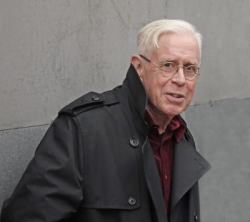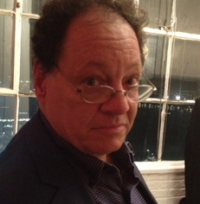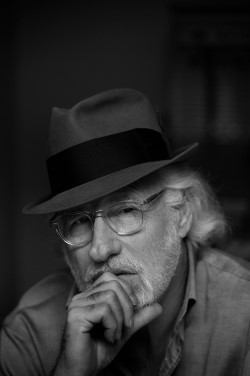.
.
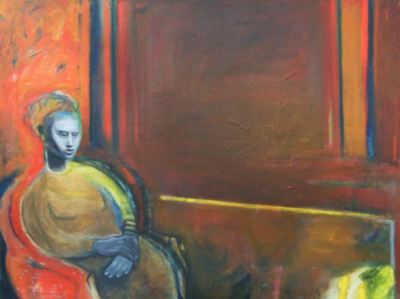
“Red Meditation” by James Brewer
.
__________
.
…..“Reminiscing in Tempo” is part of a continuing effort to provide Jerry Jazz Musician readers with unique forms of “edu-tainment.” As often as possible, Jerry Jazz Musician poses one question via e-mail to a small number of prominent and diverse people. The question is designed to provoke a lively response that will potentially include the memories and/or opinion of those solicited.
…..Since it is not possible to know who will answer the question, the diversity of the participants — and the number of them — will often depend on factors beyond the control of the publisher.
…..The responses from the people who chose to participate in this edition are published below with only minor stylistic editing. No follow-up questions take place.
.
.
_____
.
.
In this edition, we ask the question:
.
“During this time of social distancing and isolation at home, what are examples of the music you are listening to, the books you are reading, and/or the television or films you are viewing?” (If you wish, please feel free to also share your thoughts on the effects this isolation is having on your creativity or on your world).
.
*
.
Many thanks to all of our participants, whose partial biographies accompany their response. For more complete information about each participant, click on the link under their photograph.
Readers are invited to share their own thoughts by using the comments field at the conclusion of this feature.
.
.
_____
.
.
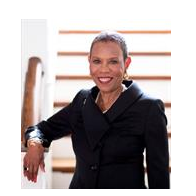
President of Spelman College; dean emeriti of the Tisch School of the Arts; associate provost for the arts at New York University; past commissioner of the New York City Department of Cultural Affairs (1987 – 1991); author of American Odyssey: The Life and Work of Romare Bearden
.
___
,
This response was submitted on April 7
.
…..Years ago I read Wolf Hall, the first volume of Hilary Mantel’s trilogy of the life of Thomas Cromwell. Cromwell and his rise to power felt very modern. Even more intriguing were the women, not only Henry’s series of wives, but the women who exercised power out of sight, but who exercised that power definitively, nonetheless.
….. Having read Wolf Hall, then Bring up the Bodies, I am now reading the final book of the trilogy, The Mirror and the Light, that takes us to the end of Cromwell’s life. After I complete Mantel’s novel, I am eagerly awaiting the release of a non-fiction book, Isabel Wilkerson’s new book on caste in America, The Origins of Our Discontents.
…..As for the multi episode shows that hook you mercilessly, On Netflix my husband and I are enjoying Outlander and on Acorn, the new show with David Tennent and Cush Jumbo, Deadwater Fell, has us hooked...On HBO, I await the return of Issa Rae’s Insecure.
…..Parasite has got to be one of the best films I have seen in a very long time.
…..When Bill Withers passed, I felt called to hear his voice and the simplicity and honesty of his lyrics. “Lean On Me” sounds like an anthem for our times.
.
.
Listen to Bill Withers perform “Lean on Me”
.
.
Click here to read our Jerry Jazz Musician interview with Mary Schmidt Campbell about her book, American Odyssey: The Life and Work of Romare Bearden
.
.
_____
.
.
photo by Daniel Keebler
Songwriter and recording artist for 50 years; Canadian music legend; has released 34 albums and played thousands of concerts around the world; songs have been covered by many artists including Jimmy Buffet, k.d. Lang, Barenaked Ladies, Hawksley Workman, Jerry Garcia, Anne Murray, Elbow, Mary Balin, Judy Collins, Chet Atkins, The Rankin Family, Blackie & The Rodeo Kings, and many others.
.
___
.
…..You might think, in this time of isolation, that there would be an opportunity for catching up on all sorts of things: household tasks that we’ve been putting off, books waiting to be read, etc, but for me the reality is that with my wife teleworking and my 8-year-old “teleschooling” and having ZOOM play dates, and all of us together 24/7, I’m quite a lot busier than what used to be normal. That said, I have been listening and reading: Fernando Pessoa’s novel The Book of Disquiet, William Gibson’s Agency, poetry by Charles Bukowski, Joan Logghe and Wislawa Szymborska. For music, it’s pretty random. Recent listens include YouTube videos of David Russell’s stunning guitar playing as well as various performances by Voces8, Charles Mingus’ Tijuana Moods (an old favorite), the Rolling Stones’ Exile on Main Street, and Schoenberg’s Verklarte Nacht..I haven’t watched any TV. That’s something I mostly do in hotel rooms. My daughter and I watched the second Smurfs movie the other day, which I love!
…..We are lucky in that my wife is still working. I feel for the baristas and waiters and cab drivers and everyone who depends on being able to move around and congregate for work. There’s an undercurrent of worry we all feel. My daughter feels some stress that gives her trouble getting to sleep sometimes. I feel somewhat fatalistic about COVID-19 with respect to myself.
…..I suppose each of us has to find whatever ways we can to put our “house arrest” to good use, even if it’s only resting, which a lot of us probably need. After a month, it still feels like a novelty. The challenge of coming up with creative ideas of how to pass the time, maintain friendships and acquire toilet paper is still kind of entertaining in itself. I’m not sure that will remain true if we have to live like this for too long.
.
.
Bruce Cockburn’s official video of his song “April in Memphis,” from the 2019 album Crowing Ignites
,
.
.
_____
.
.
photo Tim Davis
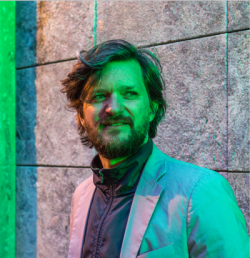
Investigative journalist; special correspondent for .Vanity Fair; .author of Sticky Fingers: The Life and Times of Jann Wenner and Rolling Stone Magazine
.
___
.
This response was submitted on April 1
…..For me, music is a daily elixir and especially right now. I’ve been playing records at night on Facebook Live, a little living room jam for friends, and getting a lot of mileage from the Basie “jam” albums on Pablo Records and Yusef Lateef’s 1960s albums for Atlantic. But the album I keep coming back to is this odd but absolutely fantastic album, “Newport Rebels.”
…..In 1960, Charles Mingus and Max Roach decided they’d had it with the “annual Ben-Hur-with-a-horn production at Freebody Park,” as the liner notes put it. The Newport Jazz Festival, they felt, had become too commercial and formulaic. Ever the provocateur, Mingus put on his own outlier program in nearby Cliff Manor. Later that fall, he and Roach — with Roy Eldridge, Eric Dolphy, Jo Jones and the great Tommy Flanagan — cut this album, an homage to their achievement. It’s a warm and deeply brotherly jam, with Mingus and Jones — and, alternately, Mingus and Roach — giving the elder Eldridge room to stretch out on some swinging, bluesy solos that surprise and delight at every turn. The feeling of intimate connection inside these jams is palpable. You can tell Mingus has so much heart for Eldridge and Jones, who are bonded in the blues. Flanagan’s touch on piano, of course, is the essence of soul. If you were quarantined with only one band, you could hardly do better than this.
.
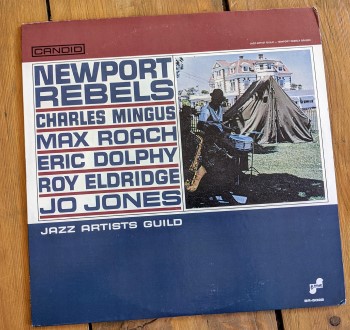
.
.
…..If you only sample one track, try “Me and You,” the closer. It’s magic. (Originally released on the Candid label, this is a reissue from Barnaby Records, pressed in 1978)
.
.
.
___
.
.

Steve and Margaret Forster Professor, Arizona State University; author of Religion Around Billie Holiday
.
___
.
This response was submitted on May 4
.
…..I made a few years ago a playlist of songs for a book I was writing about Billie Holiday. My habit became to play it whenever I visited some new place, because it helped dispel the strangeness, and made me feel at home. Now that I am at home, with almost everyone else in the world, I find it returns those places to me, and makes me feel much less alone. I’ve long appreciated poet Michael Robbins’s explanation, in an essay that feels especially brilliant and acute these days, of why this should be so. Popular songs, writes Robbins—and Holiday was a gorgeous interpreter of them—“depend on the possibility of communal participation” for their full effect; they ground “us in a community, however attenuated or virtual.” The songs we know by heart bring us into the company of everyone else who knows them, too. I have heard of family members sending playlists for those they are barred from being with in nursing homes and hospitals,.and of healthcare workers cradling plastic-wrapped phones to the ears of the sick and dying, to bring them songs their loved ones wanted them to hear.
…..The last trip I took before the pandemic kept us home was to my parents’ house in Massachusetts. My mother died late last spring, not long after my father, both of them blessedly in the company of family at the end. My brothers and I met to sort through their things and take some keepsakes home with us. I ended up “taking” some of their favorite records, not the long-since discarded vinyl, but downloads of albums I’d listened to them play over and over: Janis Joplin’s Pearl, The Mamas and the Papas, Abbey Road, the soundtracks from The Graduate and Hair. I have a playlist now that sounds like the parties I stayed awake at night straining to hear, the music and the ice-tinkling laughs, and it makes my 30-something parents and their 30-something friends shimmeringly present to me in all their sweet, goofy, Pucci-caftan-wearing, 1970s glory.
…..I’ve just about finished the spring semester of teaching, and a shout-out here to students and faculty everywhere who’ve managed to do this on Zoom. I find being on Zoom awkward and glitchy and draining, and am grateful that it lets us be awkward and glitchy and drained together, which feels as much as anything like being in the moment. I taught a class on religion and popular culture, and assigned a bunch of movies that students reported sat well with their quarantine lives: Monty Python’s Life of Brian, the 1927 Jazz Singer, The Godfather, The Exorcist, Spike Lee’s Malcolm X, and Kumaré, which was filmed largely in Arizona, where I teach. My university is making tentative plans to reopen in the fall, and my expectation is that trying to make anything work in the classroom while wearing face masks and standing six feet apart is likely to send us straight back to the weird techno-intimacy of Zoom. In any case, when I teach the class again I’ll put more of a focus on religion and American popular sound, with help from great writing like Joshua Guthman’s Strangers Below, David Lehman’s A Fine Romance, Gayle Wald’s Shout, Sister, Shout!, Adam Gussow’sBeyond the Crossroads, and Peter Coviello’s question for the ages, “Is There God After Prince?”, which is not yet a book, but promises to be one, soon.
…..In April I reread a favorite, M.F.K. Fisher’s Long Ago in France: The Years in Dijon, the same week I watched all of Season 3 of Babylon Berlin. It made an auspicious pairing: each a sumptuous, clear-eyed lookback to the year 1929, with Europe hurtling headlong into nightmares just beyond their characters’ line of sight or fathoming. In this regard, the book I’m reading now, poet H.L. Hix’s American Anger, feels terrifying and miraculous. It was in fact published in early 2016, but it reads as though it were a missive from the future, a blistering retrospective account of America just before the last presidential election. In a remarkable series of interlocking poems, American Anger reveals the springs and motors that would drive us inexorably to the place we find ourselves now: an America where demonstrators wielding assault weapons and Confederate and Nazi symbols storm government buildings to demand an end to public health measures in a pandemic, and are not arrested as terrorists, but instead praised by the president as “very good people.”
…..Hix calls American Anger “an evidentiary.” Many universities, including mine, are collating evidentiaries of the plague year, archiving for future historians the ephemera that will document the way we live now. American Anger predicted the problem of not being able to put boundaries on such a collection, of there being nothing, now, anywhere, that lies outside of the present pandemic and our heroic and murderously inept responses to it. “Put another way,” Hix writes in an afterword to American Anger, “where evidence is limited or scant or elusive, it is susceptible to being marshalled, subjected to my ends, as in a court case. (If the glove doesn’t fit, you must acquit.) Where evidence is unlimited, though, where there is more evidence than could possibly be gathered or relayed, where the evidence is there for all to see, the power relation is inverted: I do not marshal, but instead am marshalled by, the evidence.”
…..A friend tells me that in quarantine we are becoming more ourselves. Another reminds me that when Pope Francis speaks these days of apocalypse he means it not in the sense of world-ending, though we may come to that, but of unveiling, of bringing to light what is hidden. The Covid-19 pandemic feels apocalyptic in just this sense: in Hix’s words, it reveals “as evidence the evidence all around us, including and especially the evidence we ourselves are.”
.
.
Listen to the 1937 recording of Billie Holiday singing “Trav’lin All Alone” (with Lester Young on saxophone, Buck Clayton on trumpet, Jo Jones on drums, Freddie Green on guitar, Claude Thornhill on piano, and Buster Bailey on clarinet).
.
.
.
Click here.to read the.Jerry Jazz Musician roundtable conversation, “Religion ‘around’ Langston Hughes, Billie Holiday and Ralph Ellison” with authors Tracy Fessenden, Wallace Best and M. Cooper Harriss
.
.
_____
.
.

Tim Davis
Tim Davis (born Malawi, 1969) is an artist, writer, and musician who lives in Tivoli, NY and teaches photography at Bard College. His latest project, I’m Looking Through You, will be published by Aperture in 2021. The Tang Museum at Skidmore College showed alarge survey of recent work in photography, video, sound, sculpture and performance entitled “When We Are Dancing, I Get Ideas” in 2019. The catalog will be published in 2020.
.
___
.
This response was submitted on April 9
Once Trump and Pence died of Covid-19, we all remember the jubilation many felt when Nancy Pelosi became president. And in her first week, like a lion in winter, she passed the CAT (Covid Arts Transfusion) Act, which provided a huge swell of funds for artists who can “ameliorate, absorb, swaddle, and embrace the pain humanity is suffering.” My project, Healing Blimps, immediately swelled into fruition. I received a grant to float a dozen dirigibles over the country’s settlements, broadcasting a playlist of music that, just by being in its presence, heals the soul. Each was outfitted with a speaker system that wouldn’t be out of place at a Led Zeppelin concert or Papal Encyclical, to bring our message of hope and delirium to the world. The playlist for the blimps quickly evolved, over a marijuana-fueled Zoom meeting between me and my global musical shaman-consultants. Of course, there were accidents. The spring weather in Oklahoma is problematic for blimps. But mostly, the country reported that when the Healing Blimps arrived, communities came together, (six feet apart) and wept (in their masks). Hearts were opened and genuineness flowed through the lymph systems of our sisters and brothers in quarantine. Here is the first Healing Blimps playlist:
-
-
-
-
- Alice Coltrane, Turaya & Ramakrishna
- Hilliard Ensemble, Guillaume Dufay, O Sancte Sebastiane
- Come Live with Me, Dorothy Ashby
- The Inflated Tear, Rahsaan Roland Kirk
- Paris, Texas, Ry Cooder
- Aguirre I Lacrimae de Rei, Popol Vuh
- Bismillahi ‘Rrahmani ‘Rrahim, Harold Budd
- It Never Entered My Mind, Miles Davis Quintet
- Flying, The Beatles
- Alabama (Live at Birdland), John Coltrane
- Lift Him Up, That’s All, Washington Phillips
- Chants d’Auvergne, Vol. 1: No.2. Bailero, Joseph Cantaloube
- Magnolia, Jorge Ben
- I Want to Pay You Back, The Chi Lites
- B-A-B-Y, Carla Thomas
- Coldest Night of the Year, Vashti Bunyan
- Memphis in June, Nina Simone
- Swamp Fire, Duke Ellington
- That Summer Feeling, Jonathan Richman
- I Got Your Ice Cold Nugrape, Nugrape Twins
- I Must Be in a Good Place Now, Bobby Charles
- A Love Supreme, John Coltrane
- We Shall Overcome, Charlie Haden
- Rivers of Babylon, The Melodians
- Arvo Part, Spiegel im Spiegel
- Fleurette Africaine, Duke Ellington
- Astral Traveling, Pharaoh Sander
- Bwaata, Joe Henderson
- His Blessings, McCoy Tyner
- Like it Is, Yusef Late
- Let Her Dance, Bobby Fuller Four
.
.
_____
.
.
photo by Susan Brink
.
Author; arts reporter; winner of the Deems Taylor Award for Music Journalism; president of the Jazz Journalists Association
.
___
.
This response was submitted on April 1
.
…..I’ve found that I’m engaged in a lot of work – some around the virus, as the Jazz Journalists Association launched its international series of reports, JazzOnLockdown at JJANews.org. Most daily for the past week-plus, out of a new online project we’d begun called Working the Beat – all online communications — at the same time we’re celebrating 26 Jazz Heroes from 23 US cities online, and the 24th annual Jazz Awards (1st round voting just ended, tabulating now). I am also consulting the Jazz Institute of Chicago as a member of the board, concerned about programming now that our spring-early summer plans are not viable. So I’ve been editing, writing and rewriting, in touch with a large number of people on every platform except in- person.
…..Since I’ve worked from a home office for most of the past 40 years I’m used to that, and like being amid my books, CDs, instruments, other media, and take breaks to read, listen to either things I’m working on (reviewing for DownBeat, say) or that have just come in the mail or I suddenly have an urge to hear – an old favorite, or maybe something I never dipped into. I listen to a lot of piano music – was digging Tatum ‘34-‘35 solos, which I never had, and an album I hadn’t heard previously by Donald Lambert, but that was in alternation with Fire! Orchestra’s new version of Krzysztof Penderecki’s Actions, originally recorded by an ensemble Don Cherry convened (though he didn’t play on it) in ‘69 – and of course I went back to the original, then wanted to hear Cherry himself so Complete Communion, but new Myra Melford, Miya Masaoka and Zeena Parkins trio also grabbed me, and I listened to Roscoe Mitchell’s newly released orchestral album.
…..And watched the news. But also some movies; Yesterday, Danny Boyle’s Beatles fantasy which I loved, and It Happened One Night – with my daughter in New York City, we texting as it played in our respective living rooms. She’d never seen it before. I’m interested in The Plot Against America, was disappointed in Hunters, liked Avenue Five as hilarious and the Netflix Dracula (one of the best ever!) and also Astronomy Club, which is skits by a troupe of black comics in LA.
…..I’ve been having an unusually hard time reading for pleasure – I’m jumping around among too many books, nothing’s locking in. But ranging widely, wildly including stories by Theophile Gauthier, Max Beerbohm essays, Dwight McDonald’s take on Hemingway in MassCult and Midcult, myths and legends of ancient Israel by Angelo Rappoport, Chester Himes’ All Shot Up, George Silverman’s Explanation which is obscure late Dickens. That’s the past couple weeks. Plus I reread The Burnt Orange Heresy by Charles Willeford in anticipation of the film (produced by a friend) and will recommend highly Maria Golia’s Ornette Coleman: The Territory and the Adventure. I’m also more than halfway through the complete writings on film of Manny Farber.
…..I think all this activity demonstrates my restlessness, discomfort in not being out hearing live music or seeing movies with audiences. I want to be diverted from the immediate dangers and disappointments and fears, but not mindlessly – I want to engage with something pleasurable and meaningful (to me). I’ve been on Zoom calls for business and to hang out with friends. I’ve got lots of mags coming in New Yorker, NY Review of Books, New Republic, Smithsonian, Rolling Stone, Atlantic, Baffler and I read three newspapers daily plus check news feed constantly. . .and also do some writing. So disengaged physically – I miss swimming as I had been, too – but very much with this world. Which is scary, though I personally feel safe from the virus (have been home almost without break for three weeks, since a weekend jaunt to NYC 3/6-9), and my finances will hold out for now. What I worry about is our government and the flux of the world. What I think about is what can I do best to improve anything, what can I report on that I alone have seen or know or think, how to tell my stories to keep interest and lead to someplace unexpected.
.
.
_____
.
.
Photo by Deanne Fitzmaurice
San Francisco-based music critic who wrote for the San Francisco Chronicle from 1972 – 2009; columns have appeared in many publications, including Rolling Stone, Billboard, and the Los Angeles Times; author of several books on pop music, including the #1 New York Times best-selling book, Red: My Uncensored Life In Rock, with Sammy Hagar
.
___
.
This response was submitted on April 7
.
…..Tell you what is unusual for me at this strange time…can’t get new books from Amazon for weeks, so I have been pulling books I always meant to read off the shelves and going through those. Finished Frank Baum biography, Anita O’Day autobiography. Have Bird Lives and Straight Life lined up. My music habits haven’t changed — although I have had time to file my records — and I still listen to all kinds of crazy shit.
.
.
_____
.
.Click here to read the “Reminiscing in Tempo” edition that asks the question,.“What are 4 or 5 of your all-time favorite Blue Note albums?”
Click here to read the “Reminiscing in Tempo” edition that asks the question, “What are some of your all-time favorite record album covers?”
.
.
.
-
-
-




